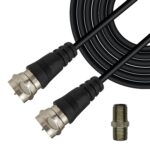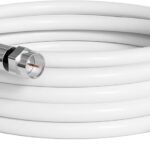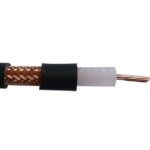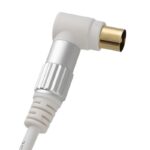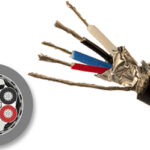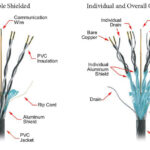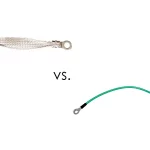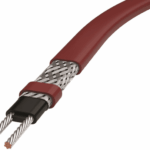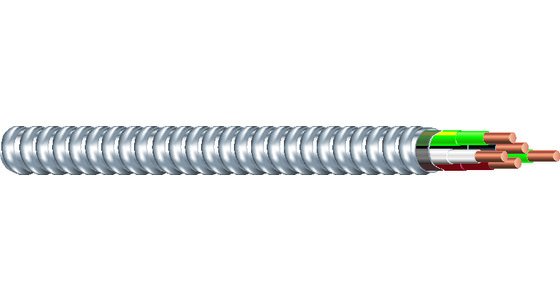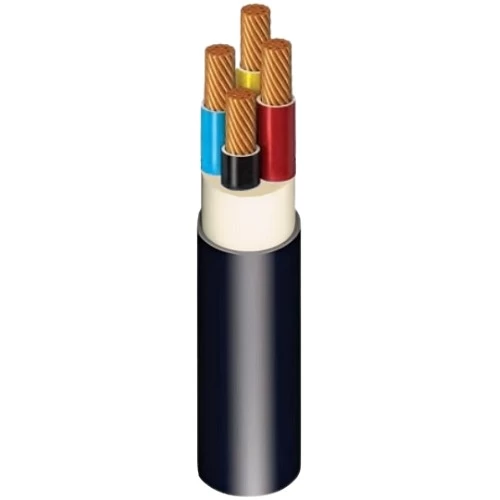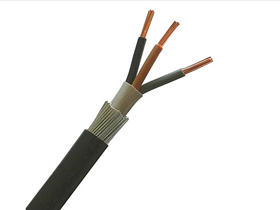Mineral Insulated (MI) Heat Trace Cable is a robust, high-temperature electric heating cable used in industrial environments where extreme heat, mechanical protection, or fire resistance is required. Unlike conventional polymer-insulated trace cables, MI cable offers superior durability and consistent performance even in harsh, hazardous locations.
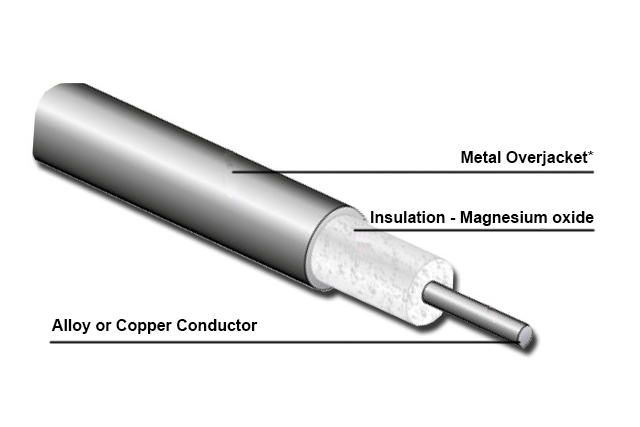
mineral insulated heat trace cable
This guide covers:
-
What MI heat trace cable is
-
Key features and construction
-
Applications and temperature ratings
-
Installation tips
-
Comparison with other trace cable types
📘 What Is Mineral Insulated Heat Trace Cable?
MI heat trace cable is a type of constant wattage electric heating cable made from a metal sheath (usually copper or stainless steel), tightly packed with magnesium oxide (MgO) insulation, and containing one or more resistance heating conductors.
Unlike self-regulating or polymer-based cables, MI cables:
-
Provide consistent power output
-
Operate at much higher temperatures
-
Resist mechanical damage, fire, and chemical exposure
🧱 Construction of MI Heating Cable
| Component | Description |
|---|---|
| Outer Sheath | Copper, Alloy 825, or Stainless Steel for corrosion resistance and strength |
| Insulation | Compressed magnesium oxide (mineral) – inorganic, fireproof |
| Heating Conductor(s) | Nickel-chromium or copper resistance wires |
| Optional Jacket | PVC or LSZH outer covering for additional moisture or UV protection |
This rugged construction makes MI cables extremely reliable in critical process applications.
🌡️ Temperature Ratings
| Parameter | Rating |
|---|---|
| Continuous Exposure Temp | Up to +1000°C (sheath-limited) |
| Power Output | Typically 20–60 W/m |
| Voltage Rating | 120V / 240V / 277V / 480V |
| Ingress Protection | IP66/67 (with proper terminations) |
MI heat trace cables are ideal for maintaining or raising temperature on pipes and vessels in extreme environments.
🏭 Common Applications of MI Heat Trace Cables
| Industry | Application |
|---|---|
| Oil & Gas | Pipe freeze protection and viscosity control |
| Power Plants | Steam line temperature maintenance |
| Petrochemical Plants | High-temp process piping |
| Food & Beverage | Sanitary processing equipment |
| Fire Protection | Fire-rated cable for life safety circuits |
| Cryogenic Systems | Prevent condensation/frost buildup |
Key Benefit: Unaffected by high temperatures or corrosive chemicals, unlike polymer-insulated alternatives.
🛠️ Installation Considerations
-
Bend Radius: Limited due to the solid mineral core (typically ≥6x cable diameter)
-
Moisture Protection: MI cable must remain sealed; use approved glands/terminations
-
Fixing to Pipe: Use stainless steel ties or clips at recommended spacing
-
Power Distribution: Requires careful power planning due to constant wattage load
-
Heat Loss Calculations: Must be done in advance to determine required wattage per meter
Note: MI cables are not field-cuttable like self-regulating cables. They are pre-terminated or cut and sealed in factory or certified facility.
🆚 MI Heat Trace vs. Self-Regulating Cable
| Feature | MI Heat Trace Cable | Self-Regulating Cable |
|---|---|---|
| Power Output | Constant (e.g., 30 W/m) | Varies with ambient temperature |
| Temperature Limit | Up to 1000°C | Typically up to 150°C |
| Flexibility | Rigid | Very flexible |
| Field Cutting | No (requires factory termination) | Yes |
| Durability | Very high (mechanical & fire) | Moderate |
| Cost | Higher | Lower |
| Use Case | High-temp, critical systems | General pipe tracing, roofs |
📏 Sizing and Selection Guide
To select the right MI trace cable:
-
Determine pipe size, insulation type, and length
-
Calculate heat loss and wattage per meter
-
Choose MI cable with appropriate wattage (e.g., 30 W/m at 230V)
-
Ensure compatibility with hazardous area certifications (ATEX, IECEx, UL, etc.)
Optional accessories include:
-
Termination kits
-
Junction boxes
-
Temperature controllers
-
Insulation blankets
🔒 Certifications and Compliance
MI heat trace cables are typically certified for:
-
UL Listed / CSA / IECEx / ATEX
-
Hazardous Locations (Class I, Division 1/2)
-
Fire Resistance / Circuit Integrity (per IEC 60331 or UL 2196)
-
IP66/IP67 Enclosure Ratings
🧾 FAQs
Q: Can mineral insulated heat trace cable be used outdoors?
A: Yes, especially with a corrosion-resistant sheath like Alloy 825 and sealed terminations.
Q: Is MI cable safe for hazardous areas?
A: Absolutely. Many MI cables are certified for explosive atmospheres (e.g., Class I Div 1/2).
Q: Can MI cable be repaired in the field?
A: It’s not recommended. MI cable should be factory-terminated or replaced if damaged.
Q: How long does MI heat trace last?
A: Properly installed MI cables can last 20+ years, even in severe conditions.
✅ Conclusion
Mineral insulated heat trace cable is the gold standard for high-temperature, fire-resistant, and hazardous location applications. Its inorganic construction, mechanical strength, and thermal stability make it the best choice for critical infrastructure, even though it comes at a higher initial cost.
📞 Looking for MI Heat Trace Cable?
TOT Wire & Cable offers:
-
Custom-length MI heating cables
-
Stainless steel and Alloy 825 sheath options
-
UL/ATEX-certified solutions for industrial use
-
Factory-terminated and sealed kits
👉 Contact us today for a quote or technical advice on sizing and installation.

